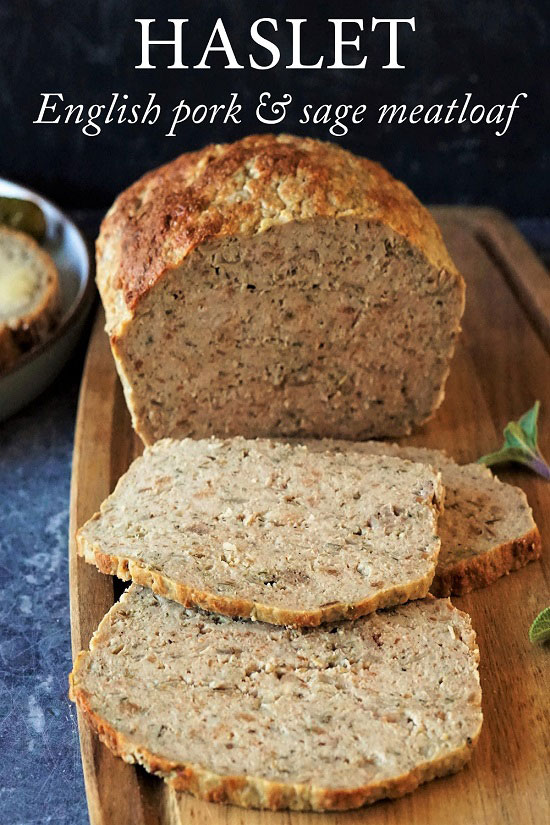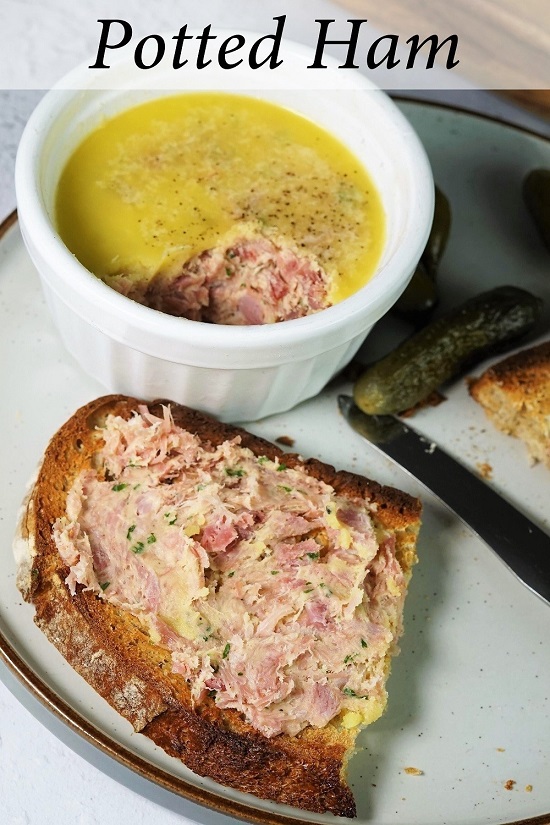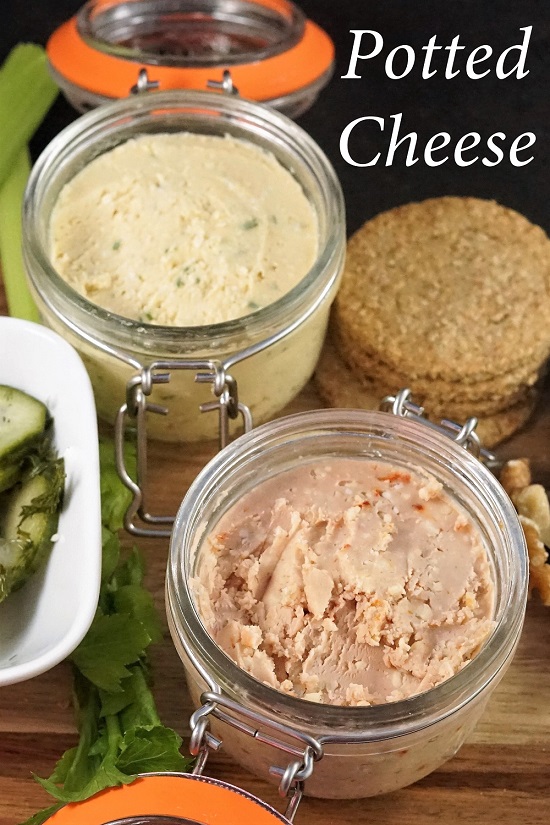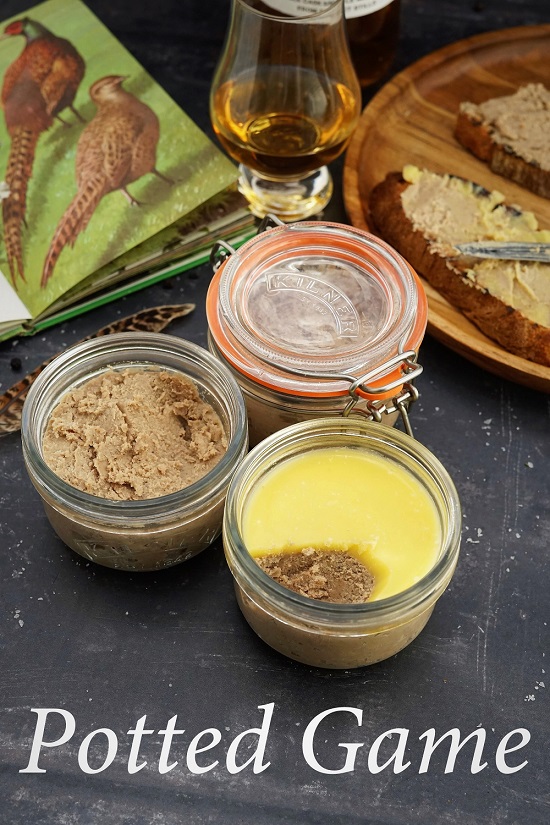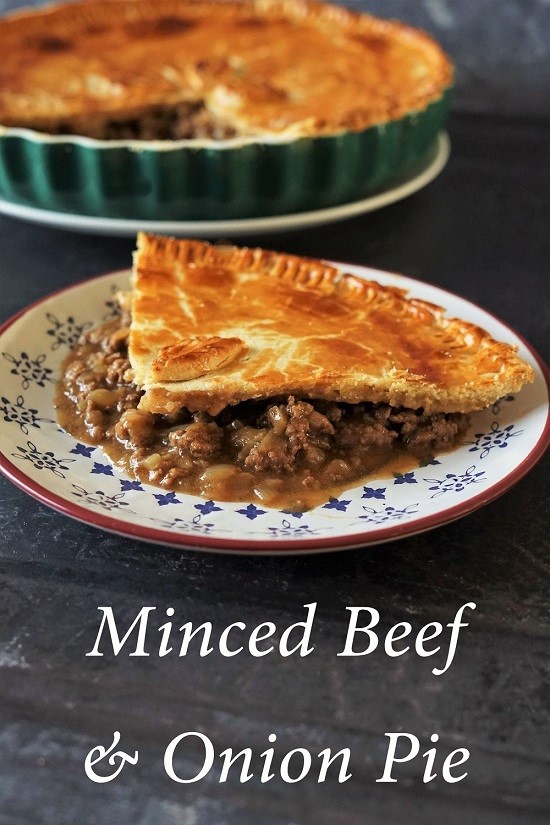Homemade Potted Beef is a traditional British food that’s so simple you won’t believe how delicious it is.
All you need to make it are diced beef, butter, salt, pepper, and a little beef stock. The seasoned, diced beef is slowly cooked with butter and stock until meltingly soft. Then you just whizz in a blender to a smooth, spreadable paste.
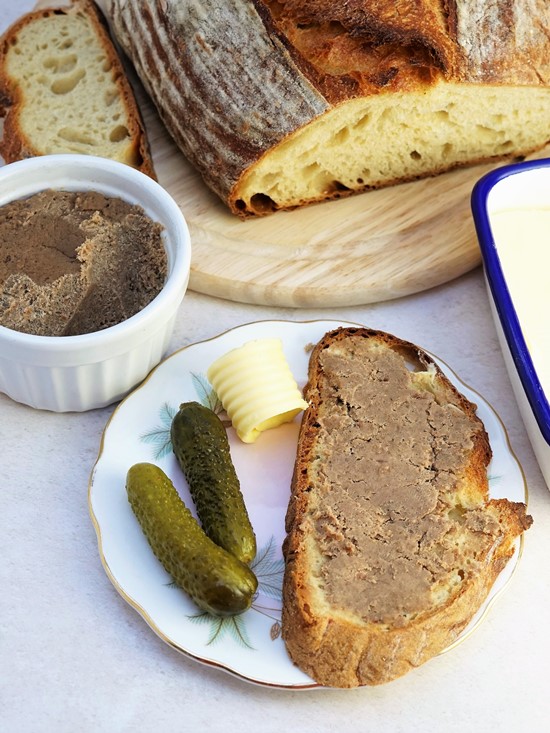
Sensational spread on crusty bread or toast with a few pickles on the side, Homemade Potted Beef makes a great lunch, picnic food, or informal first course.
NOTE: this is an update of a well-loved post from 2018. I’ve added new photos and an improved recipe. There’s also a FAQs section inspired by readers who’ve been in touch with tips and queries.
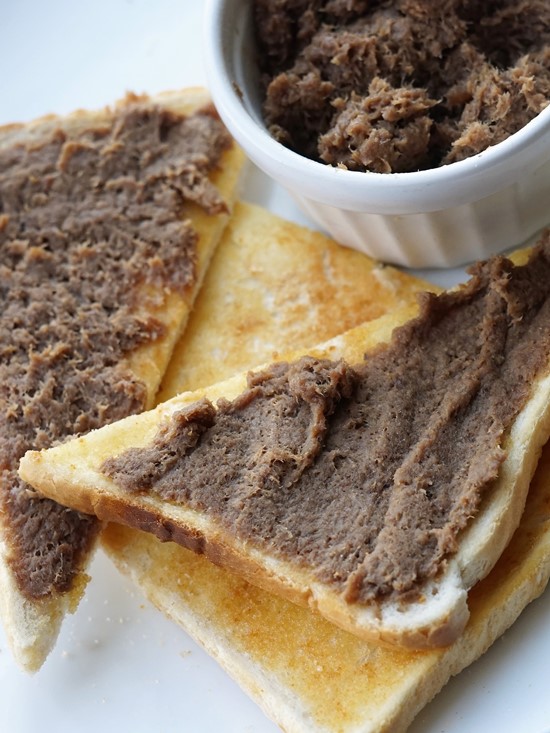
Jump to Recipe
HOMEMADE POTTED BEEF: A DELICIOUS TREAT
Maybe I was just a weird kid, but one of my favourite sandwich fillings (alongside herby, peppery Haslet) was potted beef. In those days it came from the butcher at the bottom of our road where, clutching a note from Mum, I’d often have to nip in on my way home from school.
Even now, I love potted beef spread thickly on crusty bread or toast. And you can still occasionally get it from decent butchers. But it’s dead easy, and so satisfying, to make your own.

Proof of just how simple it is: the batch I made for my original post was put in the oven first thing in the morning. While that was simmering away, I got on with decorating the master bedroom. Which meant I had delicious homemade potted beef on toast for lunch. Yum!
Whether you crave the old-fashioned flavour of potted beef from your childhood, or want to try it for the first time, I think you’ll love this easy recipe!
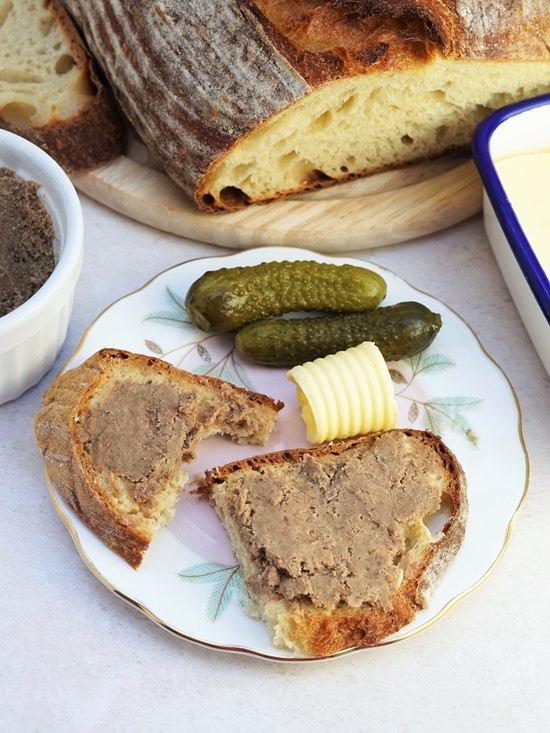
SIMPLE INGREDIENTS
One of the great things about Homemade Potted Beef is that you know exactly what you’re getting. In my case it’s just diced stewing beef seasoned with salt and pepper plus butter. Add a little beef stock for simmering plus a little more when whizzing it up and that’s it.
Contrast that with the ingredients in a well-known brand of jarred beef spread. In there you’ll find things like rusk, potato starch, chicory fibre (?!) and sugar. And there’s no mention of where the beef came from. From their website, I can tell you their polices on the gender pay gap and modern slavery (good on them), but not whether the beef they use is even British.
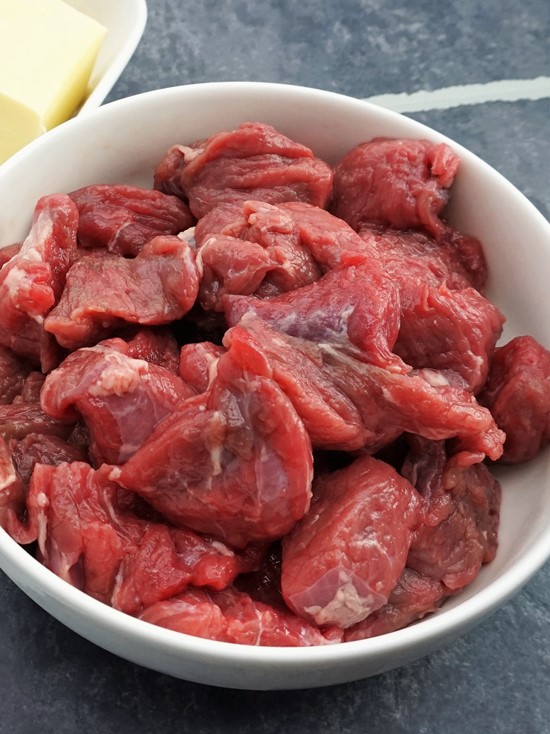
I know exactly where the meat for my Homemade Potted Beef comes from. I buy grass fed beef from local butchers like Dunwood Farm Butchery and Denstone Hall. Ready diced, boneless meat sold as ‘stewing beef’ is what I usually get. This can contain a number of flavourful cuts that need long, slow cooking. If you want to get a particular cut, then I highly recommend shin of beef.
You can fancy up the potted beef with various spices if you like – see my newly added FAQ below for ideas. But I prefer a pure, unadulterated beefy taste so stick to just salt and plenty of pepper.
EASY HOMEMADE POTTED BEEF
The only other things you need to make great potted beef are time and a blender or food processor.
You put the diced beef into an ovenproof dish and season it. Go easy on the salt, especially if you use salted butter as I do. You can always add more later if needed. To help keep the meat moist, I stir in a little beef stock too. Next, you lay slices of the butter over the beef.
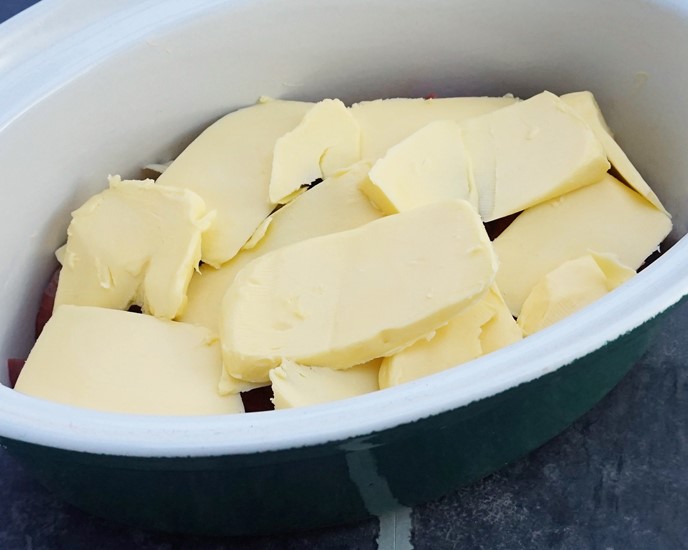
Your dish will need a lid and, if it’s not very tight-fitting, a layer of foil underneath it. This will help to keep in all those lovely juices.
All you do then is put the dish in a low oven and leave it. How long the beef will take to get really soft depends on the toughness or otherwise of the meat, how big the pieces are and the peculiarities of your oven. But plan for three to five hours. See FAQs below for using a slow cooker or pressure cooker.
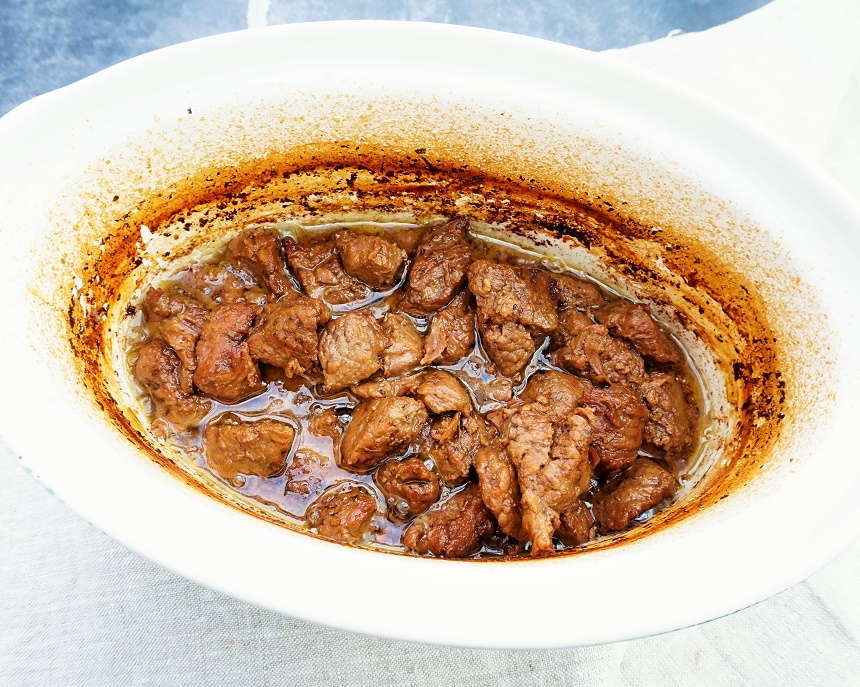
After the first thirty to forty minutes, I give everything a good stir. This will separate the chunks of beef which tend to stick together once they start cooking. It also gives you a chance to turn the oven down if you need to. All we want is a very gentle simmer.
WHEN THE BEEF IS COOKED
You’ll know when the beef is cooked as it will very easily come apart with a fork. It will also taste absolutely delicious – so try not to pop too many morsels in your mouth!
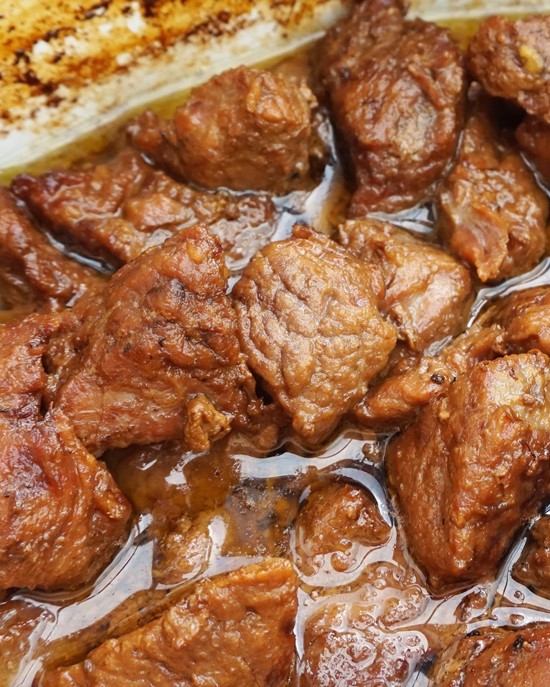
All that’s left to do then, after cooling for a few minutes, is tip everything into a blender or food processor and whizz.
To get a soft, spreading consistency to your Homemade Potted Beef, you’ll also need to add some more stock. Remember that once completely cold it will firm up considerably due to the butter and beef fat from the meat. This means you should keep it quite loose at this stage. When the texture seems right, make sure you taste to see if it needs any more salt or pepper.
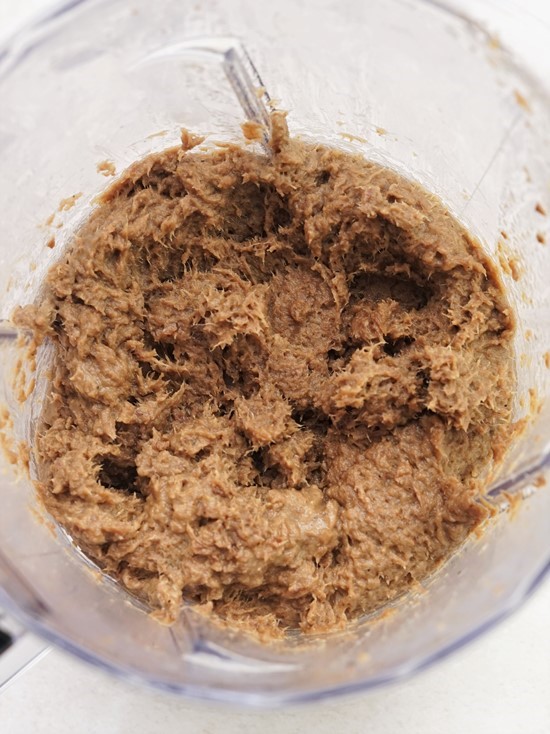
The Homemade Potted Beef should now go into the fridge to cool. You can pack it into individual ramekins, jars, or one big container if you like.
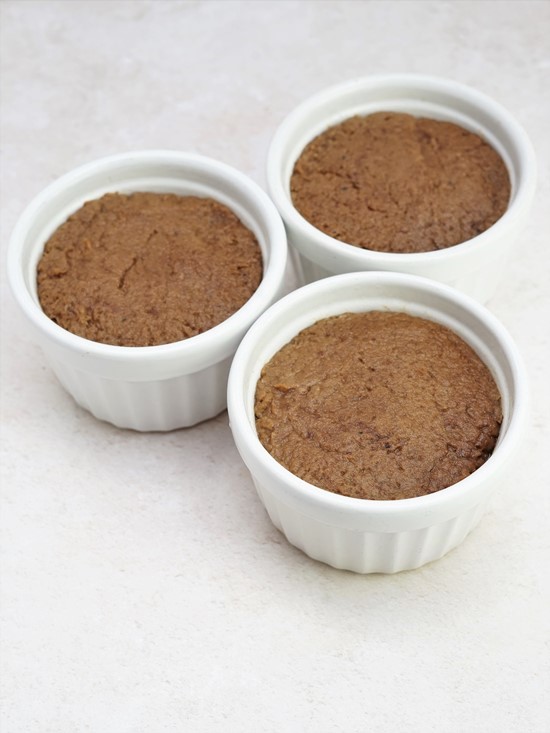
SERVING HOMEMADE POTTED BEEF
Depending how much stock you added, you will probably need to take the potted beef out of the fridge a little while before eating so it becomes spreadable again. I often ping a ramekin in the microwave for 12 – 20 seconds so it becomes a little warm too. Gorgeous!
My favourite way to eat it is spread on good bread. This makes for a stonking lunchtime treat.
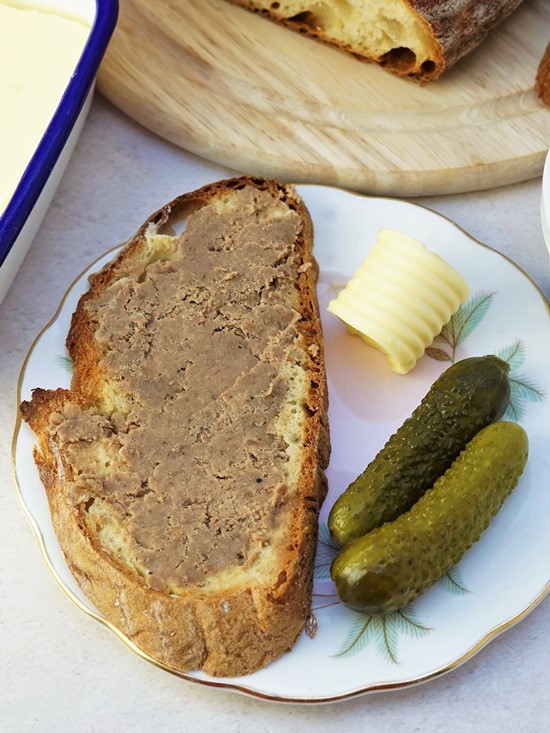
Or how about on thickly sliced toast? I must say, I’m sometimes rather naughty and spread the bread with butter before slathering on loads of Homemade Potted Beef.
But I think it’s impressive enough to serve as a starter to guests. Make sure your bread is top quality, like my no-knead Sourdough or Crusty Bread, and provide a range of pickles such as cocktail onions, cornichons or gherkins.
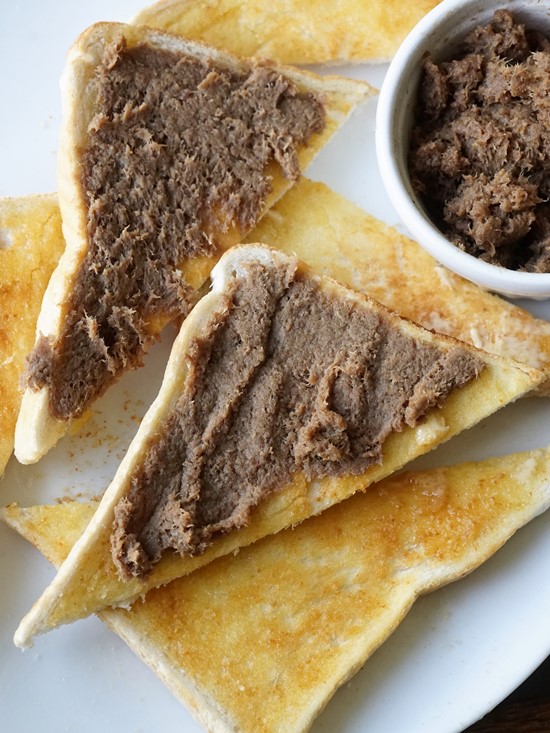
Potted meats were traditionally made to preserve foods. A layer of fat was poured over the top and they were left in a cool place. While, without that layer, my Homemade Potted Meat can’t really be considered a preserve and needs to be eaten within four days, I don’t think you need worry.
Tasting this good, the problem will be how not to eat it in one sitting. And all to yourself.
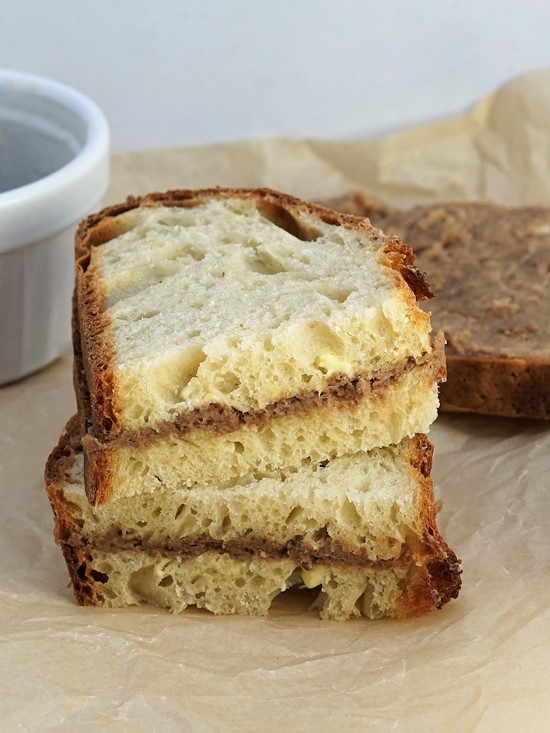
FREQUENTLY ASKED QUESTIONS
Since first posting the recipe back in 2018, I’ve been amazed to find just how popular this rather old-fashioned treat is. I’d thought it was just me who had fond memories of it from childhood. But, judging from the responses I get, it seems I’m not the only one.
I’ve made batches of potted meat countless times since then and have been able to improve the recipe even more. Also, inspired by those who’ve been in touch with tips and queries, here’s some FAQs I hope will be useful for those trying my Homemade Potted Beef for the first time.
Q1. WHAT BEEF SHOULD I USE?
You will need boneless chunks of beef. I most often use ready diced beef sold as ‘stewing beef’. This can contain any of the tougher cuts that require longer cooking but which have good flavour plus the fat needed for a successful potted beef. You could also use braising steak which is similar. If you want to buy a specific cut, then I’ve had excellent results with shin of beef.
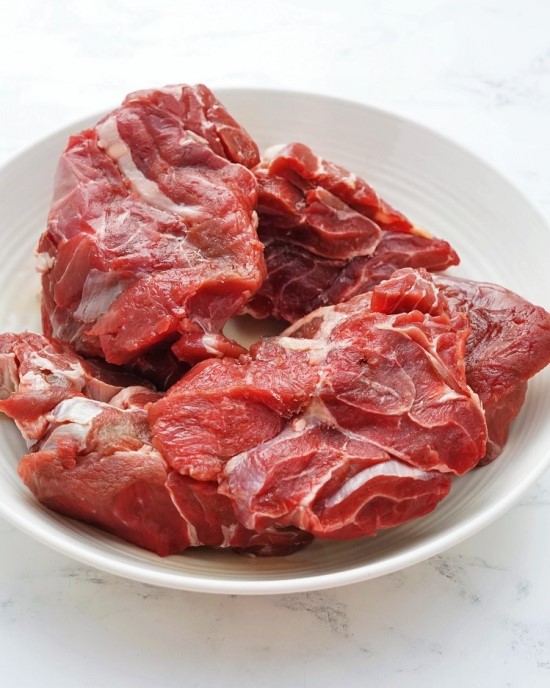
Q2. CAN I USE MINCED/GROUND BEEF INSTEAD OF DICED?
I haven’t made potted meat with minced/ground beef and don’t recommend it. My feeling is that with long slow cooking it could become tough and dry rather than soft and tender. However, if you’ve tried it with minced beef I’d love to hear from you how it went.
Q3. CAN I DOUBLE THE RECIPE?
You certainly can! So long as you use a suitable sized cooking vessel so that the meat isn’t crowded, cooking double the amount shouldn’t take any longer.
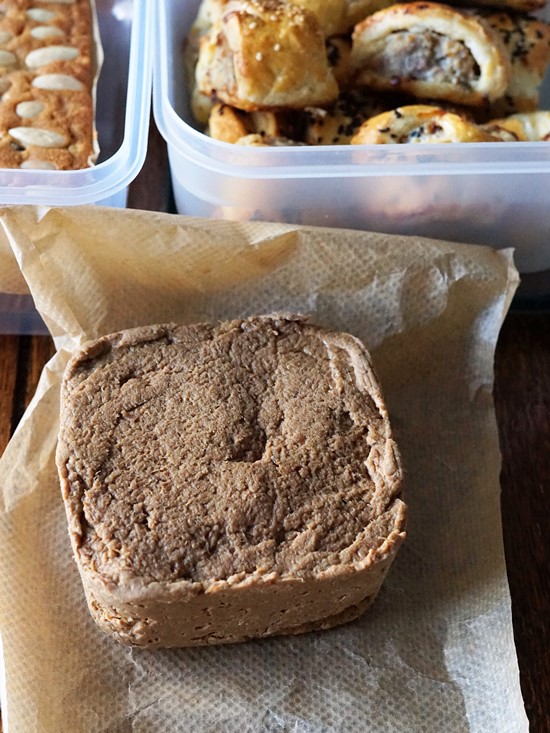
Q4. WILL THE RECIPE WORK IN A SLOW COOKER?
I don’t use slow cookers myself, but one person who does commented that it worked for them on low. Another said they put it in for 7 hours. It’s also recommended that the beef is stirred now and then to prevent a dry top layer forming.
Q5. HOW ABOUT USING A PRESSURE COOKER?
Although I haven’t personally tried it (yet!) I’ve received feedback from someone who had great success on a low pressure for 15 minutes with enough stock added to cover the meat.
Q6. CAN I ADD SPICES?
I prefer just salt and pepper, but if you want to add spices then feel free. Following my recommendation to stick to spices that have traditionally been used in Britain for hundreds of years, one commentator successfully used a little nutmeg, cloves, and allspice.
Q7. MY HOMEMADE POTTED BEEF IS TOO HARD TO SPREAD WHEN COLD
These days, I always add a little beef stock to the cooking pot to keep the meat moist. I also add more stock when blending the cooked meat. Remember that it will firm up considerably once cold so aim for a loose mixture at the blending stage. If your potted meat is still too firm to spread, you can stir in a little cold beef stock to get the right consistency.
Potted beef pinged in the microwave for 12-20 seconds so that it’s soft and warm is also delicious!
Q8. HOW DO I ADD A LAYER OF FAT ON TOP LIKE TRADITIONAL POTTED MEAT?
Traditionally, potted foods are covered in a layer of fat to help preserve them. With potted beef it would have been melted beef fat. However, with modern tastes, you may prefer clarified butter. Melt some butter then leave for a few minutes so the white milk solids sink to the bottom. Pour the golden clarified butter over the chilled potted meat, discarding the white solids. Chill again until set.
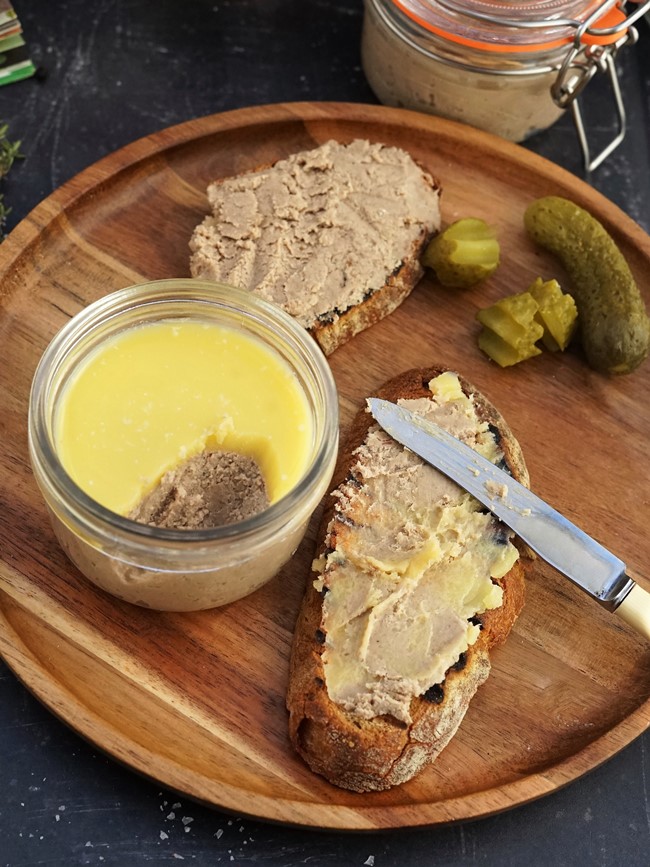
Q9. HOW LONG WILL IT KEEP IN THE FRIDGE?
Homemade Potted Meat should keep for 4 days covered in the fridge.
Q10. CAN I FREEZE HOMEMADE POTTED BEEF?
Yes, those who’ve tried have reported back that it freezes well.

If you’ve made my Homemade Potted Beef, I’d love to hear what you thought. Join in the conversation below. And don’t forget to rate the recipe!
RELATED RECIPES

